
Bridging The Gap Between Genetics and Indoor Growing Needs: Sakata Seed Cultivates CEA Success
Q&A With Tracy Lee Zogby, Head of the Controlled Environment Agriculture Department, Sakata Seed America
 Harnessing the power of existing genetics and strategic collaborations, Sakata Seed is providing quality seeds, exceptional service, and robust support to meet the diverse needs and demands of the rapidly expanding controlled environment agriculture (CEA) market. We had the chance to catch up with Tracy Lee Zogby, CEA Lead, Sakata Seed America, to learn more about the company’s goals and objectives for its CEA department. We talk about some of Sakata’s outstanding varieties, the challenges and opportunities that CEA presents, upcoming advancements and innovations in seed development for indoor growers and more.
Harnessing the power of existing genetics and strategic collaborations, Sakata Seed is providing quality seeds, exceptional service, and robust support to meet the diverse needs and demands of the rapidly expanding controlled environment agriculture (CEA) market. We had the chance to catch up with Tracy Lee Zogby, CEA Lead, Sakata Seed America, to learn more about the company’s goals and objectives for its CEA department. We talk about some of Sakata’s outstanding varieties, the challenges and opportunities that CEA presents, upcoming advancements and innovations in seed development for indoor growers and more.
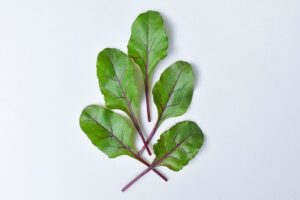 Tell us about the main goals and objectives of Sakata Seed’s CEA division? How does it support the needs and demands of greenhouse grower, vertical farm operators and other indoor growers in the sector?
Tell us about the main goals and objectives of Sakata Seed’s CEA division? How does it support the needs and demands of greenhouse grower, vertical farm operators and other indoor growers in the sector?
In 2019, Sakata Seed America began to pivot focus to an array of existing genetics that show exceptional promise in the CEA market. We quickly noticed the synergy between the emerging and exponentially growing CEA market and our existing crop business groups. Currently, we are partnering with key market growers to extensively trial existing worldwide Sakata genetics that showed promise for indoor and CEA environments. Through strategic collaborations, exceptional genetics, and continued breeding efforts, coupled with expansion and investment in our Research & Development team, we feel well-equipped to grow our CEA partnerships and supply quality seed in strong supply to the category, backed by excellent service and support.
Last year, to further support the needs of the indoor grower, we launched SakataCEA.com – a full-scale, online resource cataloging of all that Sakata’s CEA program has to offer. It features the entire CEA product portfolio, downloadable literature materials and tools for cultivation success, a digital sample ordering form and trialing information, a fully responsive seed distributor map, and a staff directory for easy access to product support.
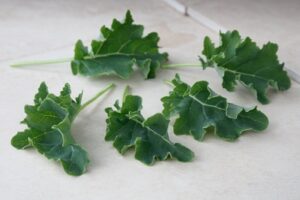 Could you provide a couple of examples of Sakata Seed’s varieties that have shown exceptional performance in indoor growing environments, and what attributes make them well-suited for CEA?
Could you provide a couple of examples of Sakata Seed’s varieties that have shown exceptional performance in indoor growing environments, and what attributes make them well-suited for CEA?
Growers have found success with several of our varieties across varied technologies. A few standouts include Mizuna Mustard Miz America, Kale Blue Ridge, and Pak Choi Joi Choi. Miz America, for example, displays an unparalleled intense color and mild flavor that makes it an ideal component in salad blends. Kale Blue Ridge has shown exceptional yields and uniformity as well as a desirable leaf texture and color. Pak Choi Joi Choi, when grown to a baby leaf stage, is flavorful, attractive, and high yielding, in addition to showing notably high post-harvest quality.
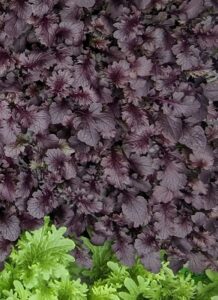 Share some insights into the unique challenges and opportunities that CEA presents for seed development and production, compared to traditional outdoor farming?
Share some insights into the unique challenges and opportunities that CEA presents for seed development and production, compared to traditional outdoor farming?
Although grouped under the single broad category of ‘CEA’, indoor growers are extremely diverse in their crop needs, growing conditions, facility types and technology. I would say one of the biggest challenges in seed development is deciding exactly which traits to breed for. Success with one type of grower or technology does not translate into success with all CEA growers, even within the same facility type. We must be able to develop genetics that fulfill the broader common traits needed across the largest number of growers and then depend on growers to manipulate their different technologies and growing methods to control more individual needs within this broader framework.
However, one of the most potentially exciting opportunities that I see in developing future varieties is the ability to focus more of our breeding on consumer-driven traits such as flavor or nutrition over chasing some of the disease resistance needs for outdoor farming.
For seed production, the biggest challenge is clarity around the entire process. Producing seed is a time intensive process, anywhere from 1 to 2 years from stock seed increases through to cleaning and testing the final crop. Having transparency in understanding the CEA growers’ seed needs in advance, both in timing and quantities, is crucial to planning and providing consistent supplies.
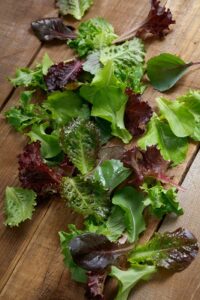 How do you identify and prioritize the traits and characteristics that are more important for indoor growers — are you able to collaborate with growers to gather feedback and insights?
How do you identify and prioritize the traits and characteristics that are more important for indoor growers — are you able to collaborate with growers to gather feedback and insights?
At times it can be challenging to collect meaningful outside trial data to track our progress toward goals. I would like to see increased direct input from growers and eventually see some uniformity in growing systems and clearer overarching breeding goals. We have seen the greatest successes and fastest progress when we are able to develop a trusting, open, mutually beneficial trialing collaboration with growers.
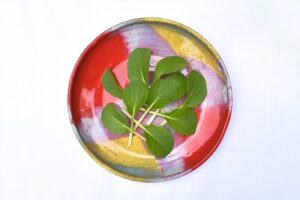 Can you highlight any recent advancements or innovations in seed development within your CEA division? What varieties or technologies can growers anticipate from Sakata Seed in the near future.
Can you highlight any recent advancements or innovations in seed development within your CEA division? What varieties or technologies can growers anticipate from Sakata Seed in the near future.
Lettuce, arugula, beet greens, mustard, and pack choi are a few of the crops on which we are gathering data and breeding, both allowing for crossover commercial products to be used now and for key trait identification for next-generation breeding projects in the pipeline. Our breeders are analyzing traits that will allow for optimum yield, advantageous plant architecture, and noteworthy flavor and texture while displaying a spectrum of colors and textures for consumer interest.
controlled environment agriculture, genetics, indoor farming, Seed breeding, seeds, varieties